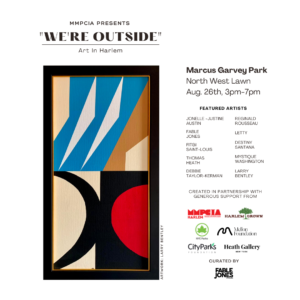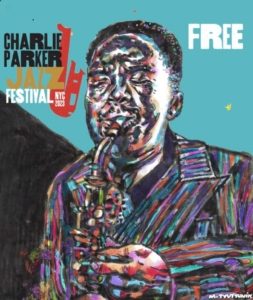Art Exhibition and Jazz Festival at Marcus Garvey Park




Here in Harlem, jazz and the visual arts go hand-in-hand, and this year we’re using the celebration of one of the most significant figures in jazz history to also highlight current stars in Harlem’s art scene.
This month the Charlie Parker Jazz Festival is back for its 31st year, including two free, star-studded concerts right here in the community at Marcus Garvey Park. Hosted by City Parks Foundation, this year’s festival features Orrin Evans and The Captain Black Big Band with singer Dianne Reeves at the park on Friday, August 25, and Endea Owens & The Cookout along with The Cookers on Saturday, August 26.
That Saturday, the Mount Morris Park Community Improvement Association is also exhibiting the work of a handful of talented Harlem-based artists in the park. From 3-7 p.m. the work of 10 artists will be displayed on easels on the Northwest Park Lawn, providing a free and open opportunity for everyone to enjoy some of the best modern artwork Harlem has to offer.
The featured artists are Jonelle Justine Austin, Fable Jones, Fitgi Saint Louis, Thomas Heath, Debbie Taylor-Kerman, Reginald Rousseau, Letty, Destina Santana, Mystique Washington and Larry Bentley. The artists draw from a diverse range of inspirations, artistic mediums and cultural backgrounds, with the common thread being their current roots in Harlem.
The exhibition is curated by artist and former gallerist, Fable Jones, an highlights a mix of emerging and more veteran artists.
Saxophonist Charlie Parker – often referred to simply as “Bird” – was a pioneer of the bebop style of playing, which was an important movement in the jazz genre that expanded the possibilities of improvisation. Parker was born in August 1920 in Kansas City and died at just 34 years old.
While he wasn’t raised in Harlem, Parker played in Harlem clubs alongside other jazz giants like Thelonious Monk and Dizzy Gillespie. Though he died 68 years ago, Bird is still considered one of the greatest saxophonists ever to live, and a major influence for those who came after him, including John Coltrane.
